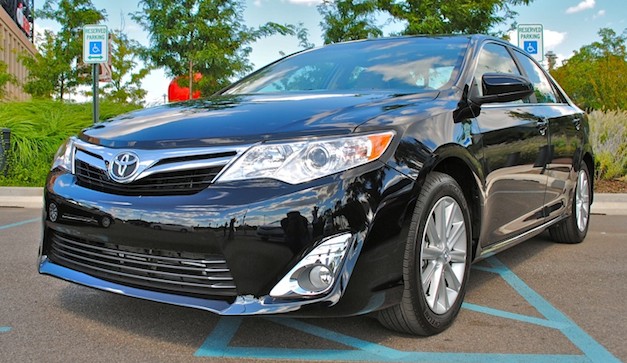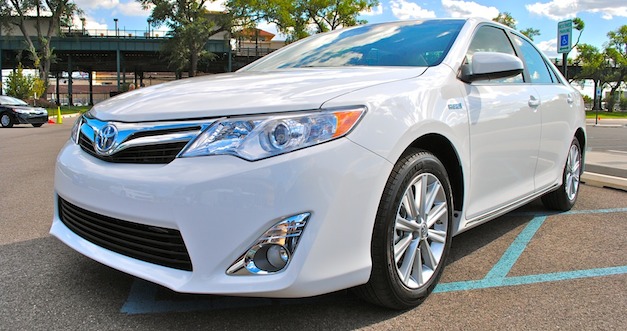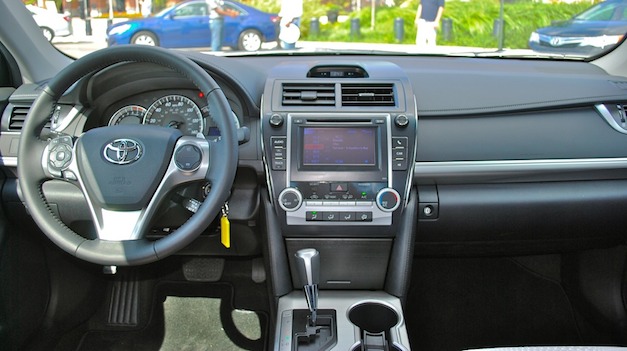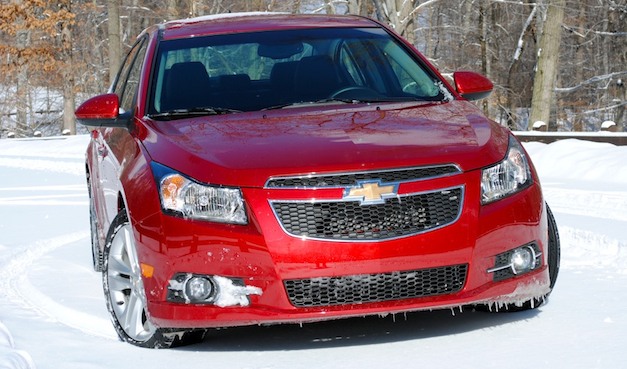
Never have I ever said anything spectacular about a Chevrolet product during my time on Earth thus far, halo
cars Camaro and Corvette aside. And I thought this while playing the juvenile game with a couple of friends and trying to mack it with the girl sitting next to me – I guess this reassures that my auto enthusiasm is still very much healthy. Anyway, trying to figure out what to say about the new German/Korean/American collaboration called the 2011 Chevrolet Cruze top-spec’d to LTZ trim, I thought long and hard about the opening statement I made.
And it’s true. I grew up when Chevrolet offered the Cavalier and the Cobalt, both of which were so absolutely terrible that I dreaded even getting one as a rental when traveling abroad. Not to mention, the woefulness extended further than Chevy’s entry-level lineup. I’ll bet many others my age and even a little older have a general distaste for the nameplate because of the cars we remembered the brand for making. But truth be told, Chevrolet – or GM in general in fact – has made a huge improvement after filing for Chapter 11 back in 2009.
GM swears that their first effort post-restructuring is a world-class leader in its segment. That first effort is the Chevrolet Cruze. GM’s at-the-time president of North American operations said about the Cruze during its press release: “people will buy it not because it’s cheap, but because they like it.” So can the new 2011 Chevrolet Cruze own up to all of the hype that it has generated? I don’t know about you, but I would like to know.
2011 Chevrolet Cruze Specifications:
- Style: Compact Sedan.
- Drive Type: Front-wheel-drive.
- Seating Capacity: 5.
- Base Price: $16,525 (Base model).
- Price As Tested: $23,995 (Chevrolet Cruze LTZ).
- Engine: 1.4L turbo DOHC inline 4-cylinder – 138-hp at 4,900 rpm / 148 lb-ft of torque at 3,800 rpm.
- Transmission: 6-Speed Automatic.
- 0 to 60 mph: 8.9 seconds.
- Curb Weight: 3,102 lbs.
- Fuel-economy (city/highway): 24/36 mpg.
All Photos Copyright © Omar Rana and Nikolina Kostrevski - egmCarTech.
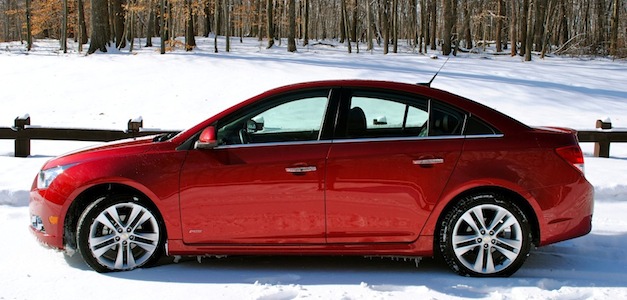
Exterior:
So let’s start off with the looks. I will have to say that in this segment, the aesthetics trophy will have to be tied between either the Ford Focus or the Hyundai Elantra. Now I’m not saying that the Chevrolet Cruze is so butt-ugly that I’d rather stare at the lovely cheeks of a baboon. But the Chevrolet Cruze isn’t particularly striking like the other two are. I do have to admit though that the top-spec LTZ model is subtly handsome in a more sophisticated, yet conservative way thanks to its larger 18-inch wheels and subtly more aggressive bodywork. But it can’t match the modernity of the Ford Focus or the swoopy and seductive lines of the Elantra. If anything, the Chevrolet Cruze elicits responses such as “not bad” or “pretty good,” but not quite “OMG IT’S AMAZING!”

Interior:
I would have to say that the interior of the Cruze is by far the best of the bunch…
The inside is a much different story. While the Ford Focus and the Hyundai Elantra both try to keep their interior modern featuring designs that can come off as a bit odd, the Chevrolet Cruze’s interior I think tops them all with a proper balance of modernity, aesthetics, ergonomics and most of all, build quality. That’s not to say the Elantra and the Focus aren’t well put together. But using “build quality” and Chevrolet in the same sentence never exactly evoked any positive comments from Chevrolet’s of the past. With the Cruze, it’s the complete opposite. I would have to say that the interior of the Cruze is by far the best of the bunch, overshadowing even the previous leader in initial interior build quality, the Volkswagen Jetta. All of the materials and surfaces made you think that you were in a car that cost at least a good $10,000 more than the Cruze’s sub-$20,000 price.
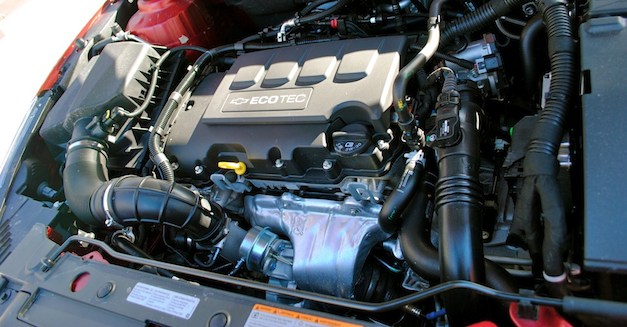
Performance:
So things are starting to shape up pretty good for the new 2012 Chevrolet Cruze LTZ. But driving is where things begin to get a bit choppy. Power is supplied by GM’s new global four-cylinder that was co-developed with GM of Europe’s Opel brand. It’s a turbocharged 1.4L EcoTec four-banger that produces about 138-hp and 148 lb-ft of torque. Sounds ok, but then you ponder whether you can get a faster, more powerful engine. Therein lies problem number one—the 1.4L engine is the only engine offered other than the 1.8L naturally-aspirated engine in the base model. It’s obvious through Chevrolet’s marketing and advertising that fuel economy is a primary concern and it’s very apparent with the new Cruze. Zero to sixty comes up in a not-so-class leading 8.9 seconds and to make things worse, only a six-speed automatic is offered.
The ride quality and body control are truly class-leading for their abilities to give the Cruze the feeling of a much more upscale automobile.
Granted, the six-speed auto comes with a manual shifting function. But either way, the combination is far from engaging. Firstly, the engine seems like it’s always straining. Actually, to make things easier to understand in plain English, the Cruze is a bit sluggish. Because the six-speed is programmed towards achieving higher
fuel economy figures, upshifts are always earlier forcing heavier pedal action, which results in consistent gear hunting. Not to mention, the transmission’s response to heavier throttle inputs can come across as a bit lethargic. Thankfully, the engine doesn’t rattle up the cabin too much but because the workhorse will be revving so frequently, it’s not exactly pleasant either. The benefit to all of this focus on fuel economy though is an EPA rated 24/36 mpg. On the complete upside, handling and ride quality, much like the interior, seem to be strong suits. Although it is far from the connected and enthralling liveliness of the Mazda3, the Cruze still makes a statement for itself for a decent blend between the two. Approach a corner and body motions are very well controlled with little to no waft. Factor in some scenarios with different road surfaces and varying bank angles, the Cruze manages to handle like a champ evoking more confidence than you’d expect with equally the amount of composure. It was very much a surprise most notably considering GM’s choice to use a cost-cutting torsion-beam rear axle with a Watt’s Z-Link from the Opel Astra. The electronically-powered steering is sufficient for the moderate cornering but is way too fast and eager for spot-on accuracy with turn-ins. The quick ratio allows for ease of use at low speeds for instances like maneuvering around parking spots. But 90% of the time, you’ll find yourself turning-in way too quickly when the pace quickens up on the corners. Even in day-to-day driving, the quick steering still required some getting used to. Make your way to the highway however, the Cruze manages to pull off the title as being the best long-distance cruiser of any car in its segment. The ride quality and body control are truly class-leading for their abilities to give the Cruze the feeling of a much more upscale automobile.
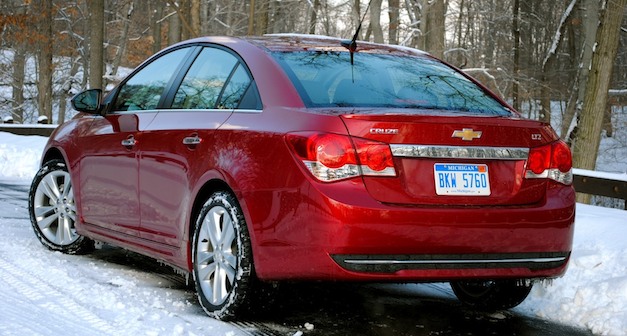
Overall:
When compared to the competition, the Chevrolet Cruze is undoubtedly a serious player in the segment of econo-sedans and this is quite a statement. After conducting some research of Chevy’s past attempts at econo-sedans, it seems that success in the segment never really went well for Chevrolet’s attempts. And this dates back to the days of the loathed Chevette and Cavalier. As history tells us, the Japanese invented and set the standard for the economy sedan by establishing the basic formula of what should define an economy sedan. Over time, many companies have taken that formula and attempted to create their own versions. For instance, the Mazda took the econo-sedan to a new level by showing the world: economy sedans don’t have to be boring to drive. That said, the Cruze takes the basic formula, adds class-leading interior and ride quality and not-so-terrible handling characteristics, thus making it a competent competitor.
Ultimately, the Cruze should be a statement: an expression of ambition and boldness with consideration of the people’s needs—and it is.
Unfortunately, competent is the only way to describe the Cruze as a whole because of the lack of a more powerful engine, less than stellar driver engagement and conservative aesthetics. This is particularly important because the Cruze is a vital
car for the brand because it appeals to a segment that reaches out to such a large crowd. Ultimately, the Cruze should be a statement: an expression of ambition and boldness with consideration of the people’s needs—and it is. Though it is one that speaks more to the average consumer than one that speaks to the enthusiast. It shows that Chevrolet can make a decent economy sedan and one that is perhaps the first ever for the brand. But because it speaks more to the average consumer than the enthusiasts and I for one being a diehard enthusiast—the Cruze rates above average in my book. As part of my recommendation and the purpose of this review, I would say those seeking a more engaging
driving experience should go for the Mazda3. Those who want an option for a diesel and near-German build quality can opt for the Volkswagen Jetta. Buyers who seek more of a fashion statement can opt for the Hyundai Elantra. And if you just flat out don’t care, you should look into the given Toyota Corolla or Honda Civic.
And of course, let’s not forget about the new Ford Focus, which is the current segment standard. Either way, the Cruze poses as a good default model for the segment. In the bigger scheme of things, the Cruze represents that Chevrolet has at least mastered the basic formula of a quality economy sedan for the first time in its history. Hopefully for the next Cruze, the brand would be more interested in considering a more enthusiastic approach. Combine that with the qualities of the existing Cruze and Chevrolet could easily top the segment in my opinion. It’s a start.








